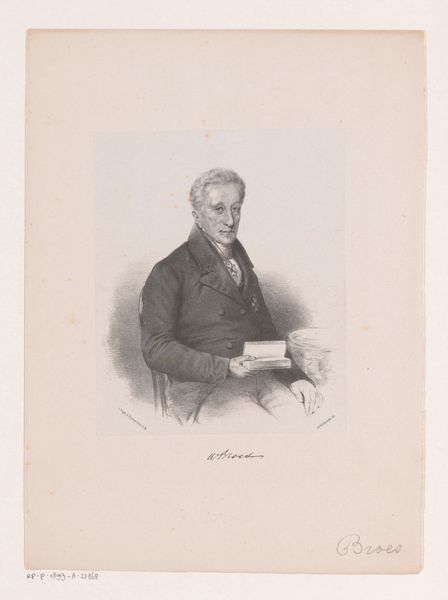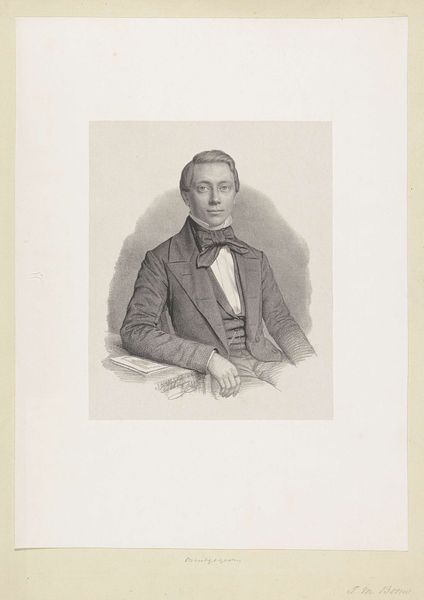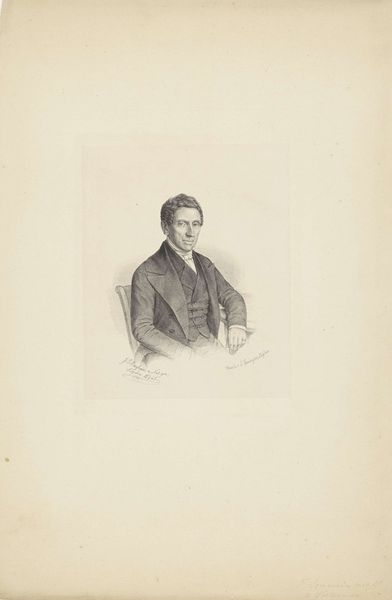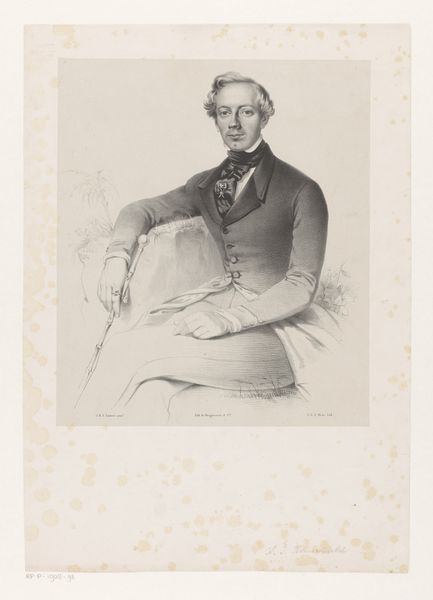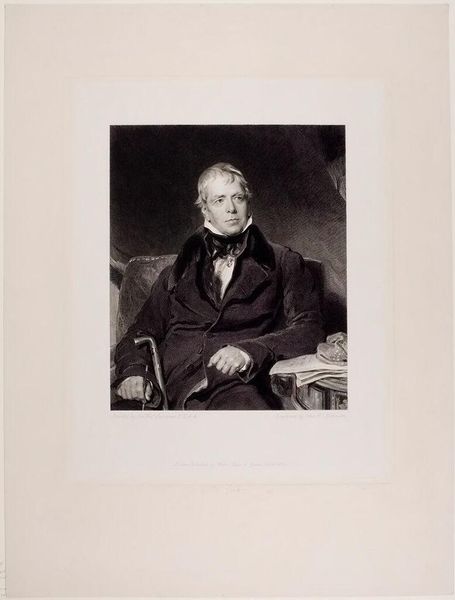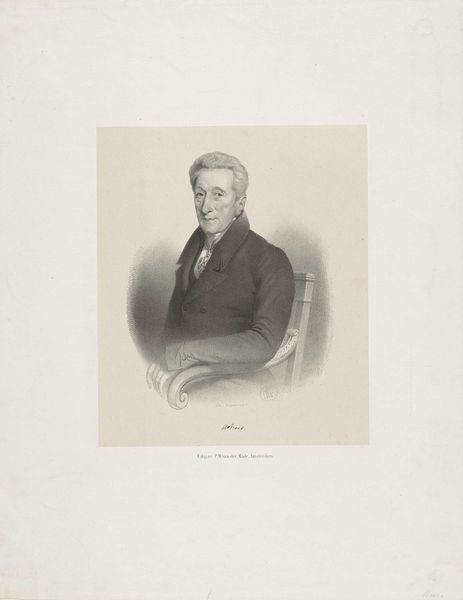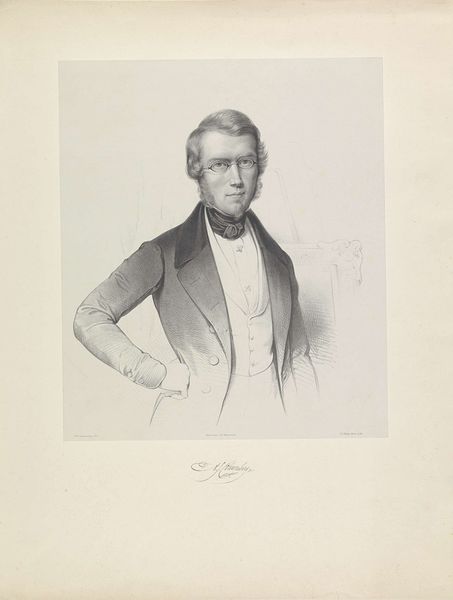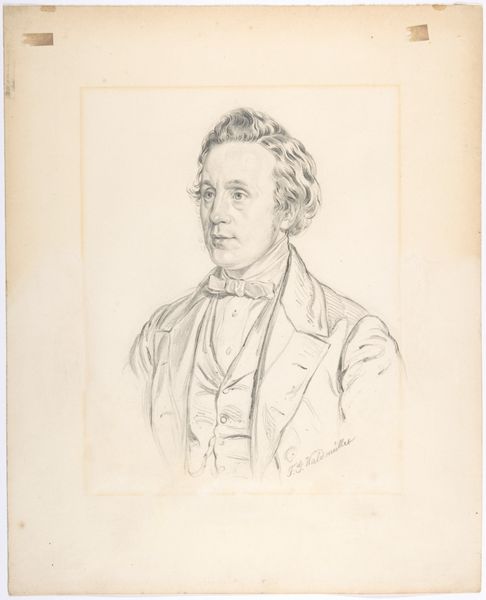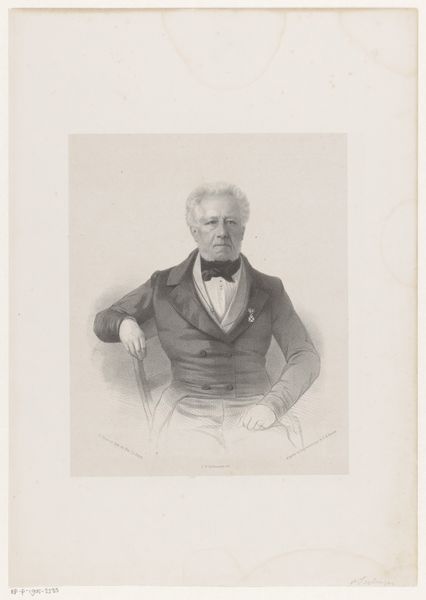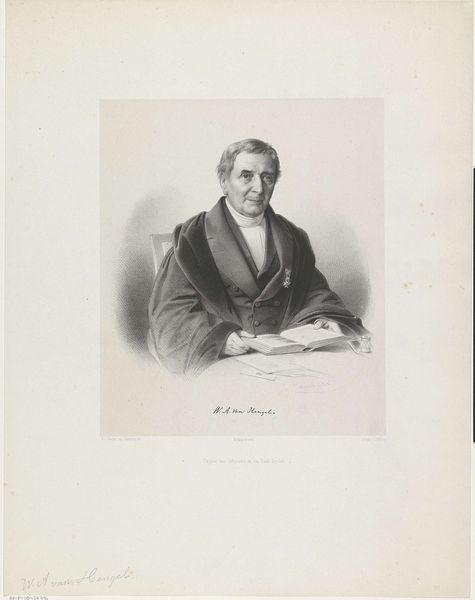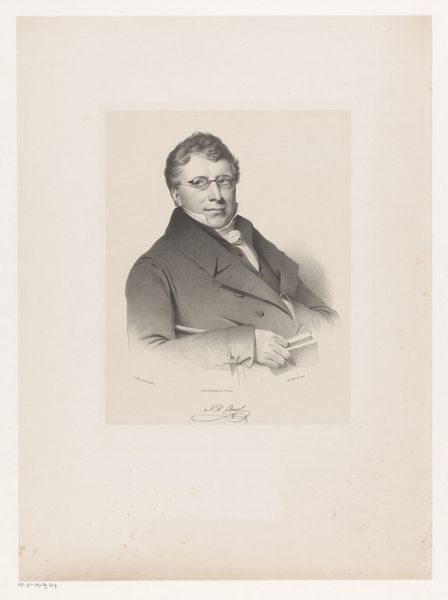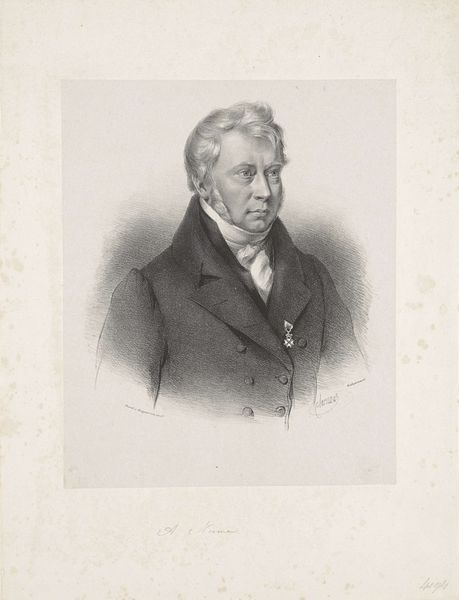
drawing, pencil, graphite
#
portrait
#
pencil drawn
#
drawing
#
light pencil work
#
pencil sketch
#
pencil drawing
#
pencil
#
graphite
#
genre-painting
#
academic-art
#
realism
Dimensions: height 313 mm, width 235 mm, height 485 mm, width 351 mm
Copyright: Rijks Museum: Open Domain
Curator: Here we have Wilhelmus Cornelis Chimaer van Oudendorp’s portrait of Philipp Christiaan Molhuysen, made in 1852. It's a graphite and pencil drawing. What strikes you initially? Editor: The overall tonal range—so subtle! It's almost ghostly in its delicacy, as if the sitter might fade back into the paper. I am also struck by the depiction of materials: from the textured cloth of the sitter's coat to the pristine pages of his book. Curator: Interesting observation. Notice how Oudendorp used pencil to capture the textures of intellectual life in the 19th century, down to the cut of his suit, with an almost obsessive precision, really pinning the trappings of class and status down. Editor: Absolutely. Consider the context of pencil drawing at this time, though. Graphite wasn’t necessarily seen as high art. The use of pencil lends itself to reproduction and circulation, like prints, making these images accessible in ways that grand oil paintings wouldn't be. How would such drawings of this influential person have been disseminated, and to what effect? Curator: Certainly a portrait like this performs its social function: images spread meaning, both about the sitter, Molhuysen, who might have benefitted from his likeness circulating. And van Oudendorp as well, his skills shown here create a long-lasting representation of his abilities as an artist. This man exudes authority—a portrait imbued with symbols of learned stature, consider the gaze, and his direct yet gentle stare, as though quietly holding the viewer's attention. He is literally depicted with a book in his hands! Editor: The book’s pages face us directly. Its binding seems robust but ordinary. Was it simply a signifier of erudition or did this man see himself primarily through the things that were around him, a physical and philosophical link to intellectual life? It provokes so many thoughts. Curator: Yes, thinking about symbols, Oudendorp uses shadow, detail, and light to shape the material world and also depict what is perhaps an equally valid likeness and presence through an object or setting that is very thought-provoking. It leaves me with more questions. Editor: Absolutely, there's a dialogue implied between material and persona that lingers in the viewer's mind long after. The very act of creating this detailed portrait also tells us much about how people sought to create legacies through material means during the nineteenth century.
Comments
No comments
Be the first to comment and join the conversation on the ultimate creative platform.
